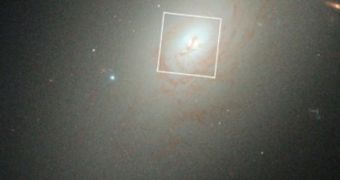Following new observations of distant elliptical galaxies that unusually bright and massive, experts are beginning to recreate a new image of the early Universe, when it was about a quarter of its current age.
The studies reveal a place that seemingly contained numerous contradictions, as well as many extremes. Making sense of all these readings could conceivably provide experts with a new understanding of how the Cosmos' earliest periods looked like.
Astronomers say that the particular galaxy that forced them to rethink established knowledge is located a good 10 billion years away, and that it was recently observed using infrared telescopes.
One of the main things that amazed scientists was that the object appeared to have comparable size, mass and density with similar structures, but located a lot closer to our planet, hence a lot younger.
This investigation lends further credence to a recent finding. In that study, a team of astronomers found a very compact and extremely dense elliptical galaxy at about the same distance in the early Universe.
These study results make investigators wonder about how it is possible to have mature, fully-grown galaxies developing at the same time the immature, compact structures that permeated the Cosmos at that particular time.
“What our observations show is that alongside these compact galaxies were other ellipticals that were anything up to 100 times less dense and between two and five times larger – essentially ‘fully grown' – and much more like the ellipticals we see in the local Universe around us,” says Michele Cappellari.
“The mystery is how these two different extremes, ‘grown up’ and seemingly ‘immature’ ellipticals, co-existed so early on in the evolution of the Universe,” adds the expert, who is based at the Oxford University Department of Physics.
What makes elliptical galaxies stand out from the crowd is that they can become ten times more massive than the Milky Way, and also the fact that they feature stars that may be 10 billion years old.
Studies revealed that distant compact elliptical galaxies contained stars that were expanding at a speed of 500 kilometers per second, whereas stars in fully-grown ellipticals only traveled at 300 kps.
“Our next step is to use the Subaru telescope to find the relative proportion of these two extremes, fully grown and compact ellipticals, and see how they fit in with the timeline of the evolution of the young Universe,” Michele adds.
“Hopefully this will give us new insights into solving this cosmic puzzle,” he goes on to say, quoted by Daily Galaxy.

 14 DAY TRIAL //
14 DAY TRIAL //